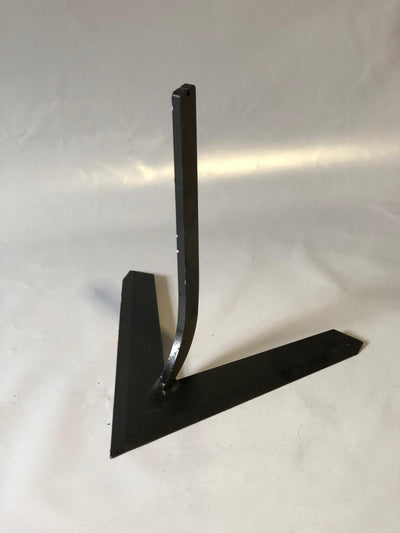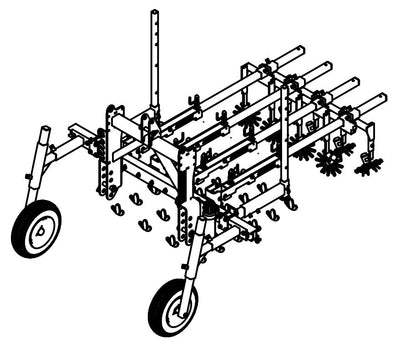The various options for bringing soil to the plant with a Steketee Ridging Machine
With crop backfilling, you apply soil on or around the plant and cover weeds within the crop row. In addition, the crop is somewhat protected against frost damage, helps ground shoots take root and facilitates harvesting. The method of ridging differs per crop. In our webshop we have four different products for ridging. All from the Steketee brand. In this article we would like to explain to you what the characteristics of the different products are and how they work exactly.

The different Steketee ridging products
In the webshop we have four products for ridging, namely:
- The Steketee ridging wing
- The Steketee ridging hoe
- The Steketee ridging chisel
- The Steketee Ridging Shears
Below we explain per type of product what the characteristics are and what they are used for.
Steketee ridging wing
The ridging wing is used to bring soil to the plant in the last stage before closeness. The last weeds are covered by using the ridging wing and you give the foot of the plant a little more firmness.
How does it work?
You attach the ridging wing to the handle of the hoe (hoe handle of 30x10mm). You can easily adjust the wing to the desired height. The working width of the ridging wing is 50cm to 75cm and can be made to the correct size by adjusting the screws and the wear plates.
You can order the Steketee ridging wing in the following two variants:
Steketee ridging hoe
The ridging hoe is used for the same purposes as the ridging wing, but can move more soil. Consider, for example, potato ridges or the cultivation of certain flowers that require more ridge formation for optimal growth.
How does it work?
The operation of the ridging hoe is the same as that of the ridging wing. The difference between the two is in the height. The ridging hoe is higher, so you can move more soil. Just like the ridging wing, the working width of the ridging hoe can be made to the correct size by adjusting the screws and the wear plates. The ridging hoes are available in sizes 45cm to 65cm and 65cm to 80cm .
Steketee ridging chisel
A ridging tool is intended for creating ridges in the row of crops. The extra soil strengthens the base of the plant.
How does it work?
There is a chisel point at the front of the ridging chisel . This ensures good penetration into the soil. Over time, the tip wears out. You can then turn it over again and when both sides are worn out, replace the part. The working width is easily adjustable by means of the threaded spindles. The ridging chisel is available in sizes 50cm – 70cm. The exact width of the part is 35cm – 50cm. The wing therefore works up to 20 cm wider than the exact size.
Steketee ridging shears made of stainless steel
Ridging shears are used, for example, for growing carrots in ridges of soil. A good carrot back ensures that the carrot can grow undisturbed.
How does it work?
The ridging shear is always used in combination with a hoe. Thanks to the ridging shears, the ridge can be neatly peeled and then rebuilt. For crops such as carrots, this process is very important to ensure storage quality. The ridging shears are available in the variants ridging shears 75cm stainless steel on the right and ridging scissors 75cm stainless steel on the left . Both provide a back distance of 75cm.
Finally
Backing up crops is an important part of achieving a successful harvest. As described, there are several parts to perform the ridging. Can't figure out which part you need? Please feel free to contact us , we are happy to help you!
Steketee ridging explanation in a movie
Are you curious how the above works in practice? Our Steketee specialist, Henry Meijering explains it in a video:




